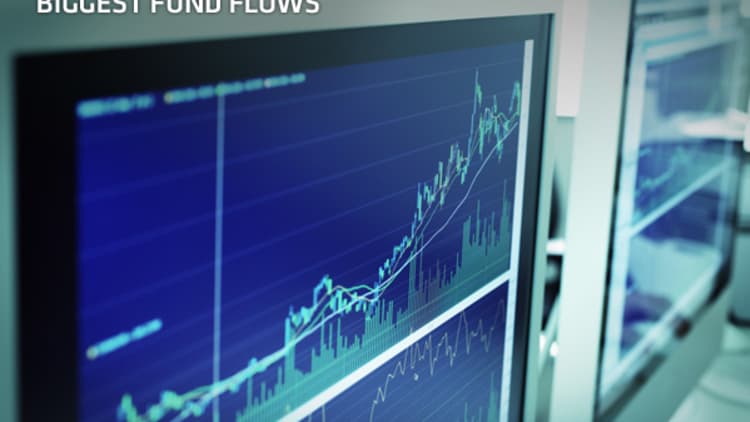
This year was a record-breaking year on all fronts for the ETF business: inflows of $476 billion, and assets under management swelling to $3.4 trillion.
For 2018, investors will continue to pour money into low-cost index ETFs. It will be great news for investors, who will benefit from even lower fees, but it will be increasingly tough for even the biggest companies to make money.
Where did all this money come from? Dave Nadig, CEO of ETF.com, says the answer is pretty simple: traditional actively managed mutual funds.
"This was a year of running away from high-cost alpha seekers into low-cost vanilla beta exposure," Nadig told me.
Remember when Marc Andreessen said, "Software is eating the world?"
In the ETF universe, indexers are eating the world.
U.S. equity ETFs attracted the biggest chunk of money, but international equity was strong, as earnings in Europe and emerging markets picked up and, despite lower prices, investors continued to put money into fixed income:
ETFs 2017: Where did the inflows go?
U.S. equity: 38 percent
International equity: 34 percent
U.S. fixed income: 23 percent
Others: 5 percent
Source: ETF.com
Not surprisingly, high yield bond ETFs (HYG) saw outflows, but they were modest. Mexico ETFs were also a loser (a reverse Trump trade). Gold miners also saw outflows, and despite talk of an infrastructure plan, utilities and transports both had negative flows for the year.
Trends that didn't happen: For all the hype, smart beta ETFs and ESG (environmental, social, governance) ETFs have not caught on, despite endless buzz that millennials will flock to socially responsible investing.
The story for 2018: Absent massive volatility, investors will continue to pour money into the lowest-cost index ETFs, leading to even lower fees as the major players continue their massive — and potentially debilitating — price war.
About 30 percent of all the inflows went to 10 low-cost, plain-vanilla equity ETFs that were indexed to the S&P 500 (IVV, VOO, SPY), developed markets in general (IEFA, EFA, VEA), or emerging markets (IEMG, VWO).
"With over 2000 ETFs out there, the top 25 accounted for half the huge flows this year," Nadig said.
Investors are the winners: The average ETF in 2018 will charge less than 40 basis points ($4.00 per $1,000 invested), less than half the average mutual fund. The big five ETF players (Blackrock, Vanguard, State Street, Invesco, Schwab) will rule, others will struggle.
"The fee wars will remain in full swing," Nadig says. "It's a tough market for issuers, but a great one for investors."
Correction: This story has been updated to reflect that ETF assets under management swelled to $3.4 trillion. A previous version misstated that figure.


